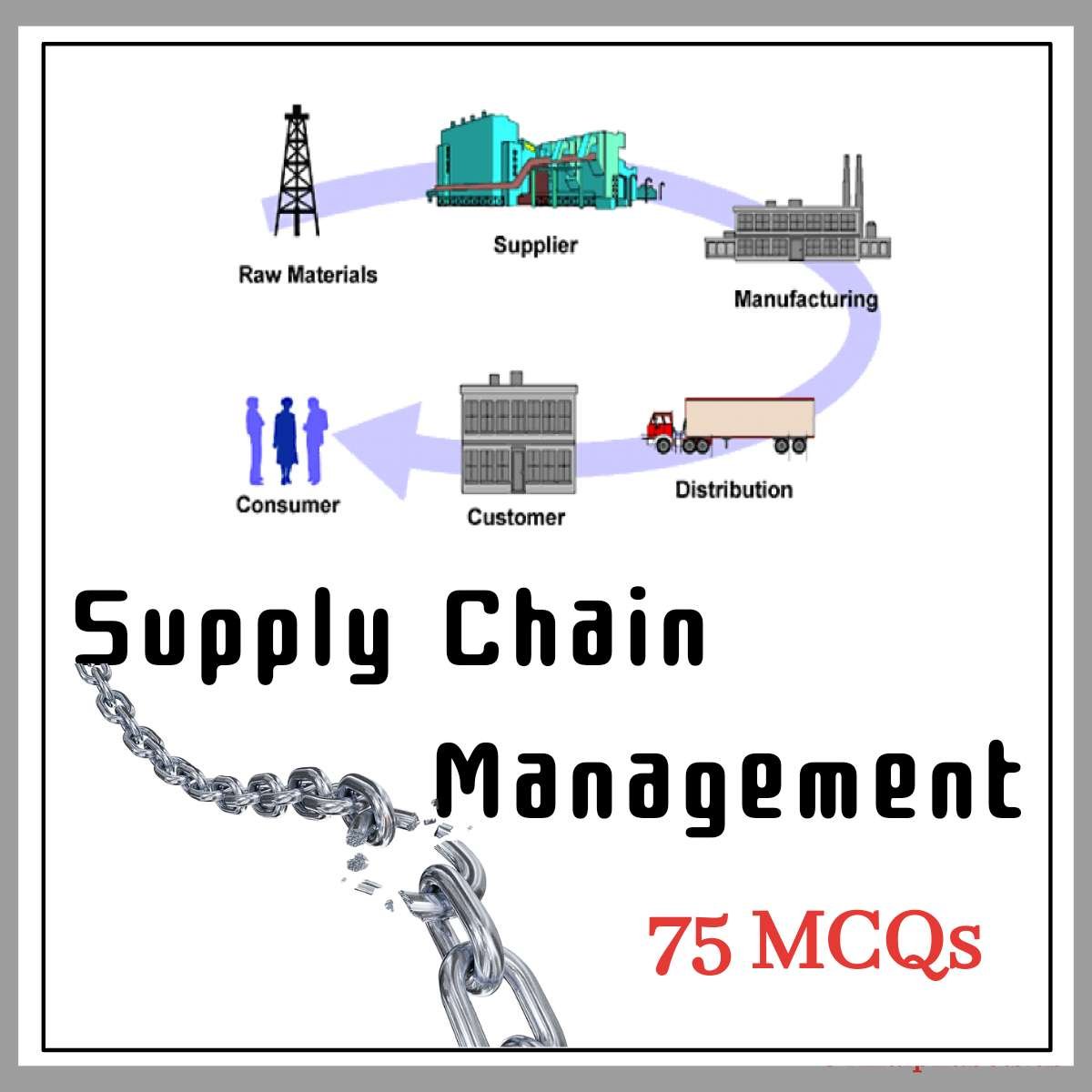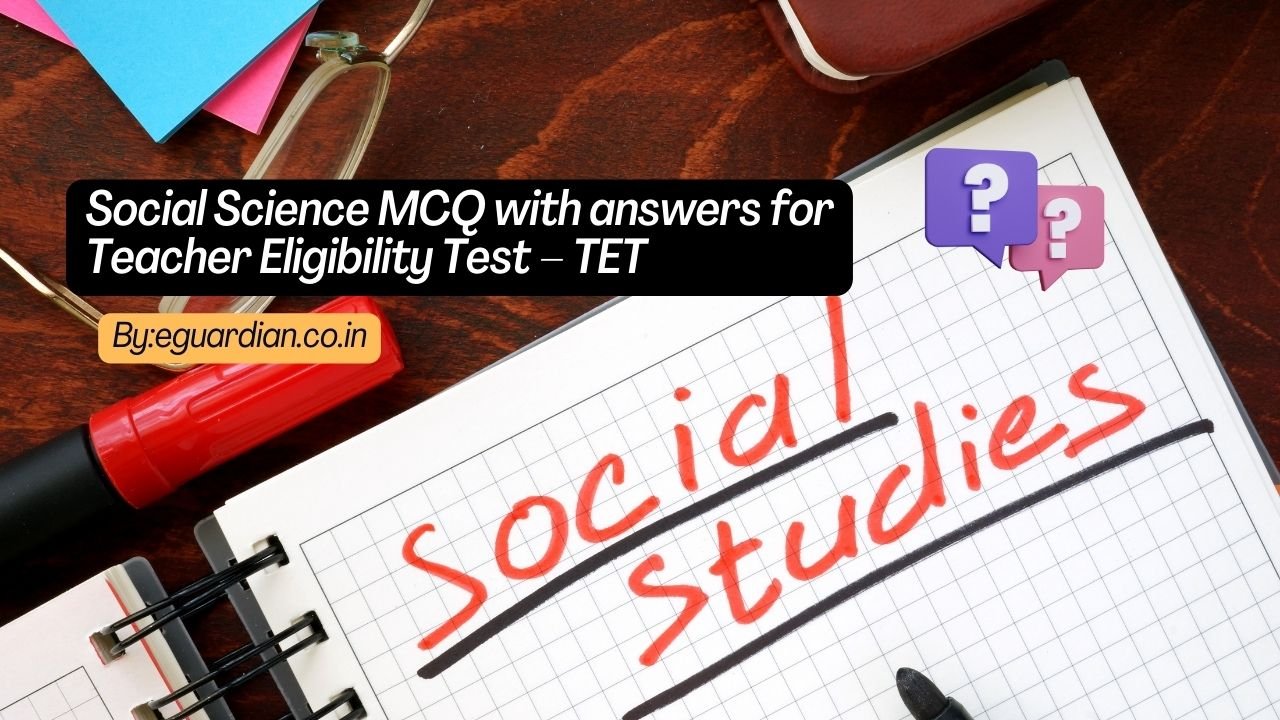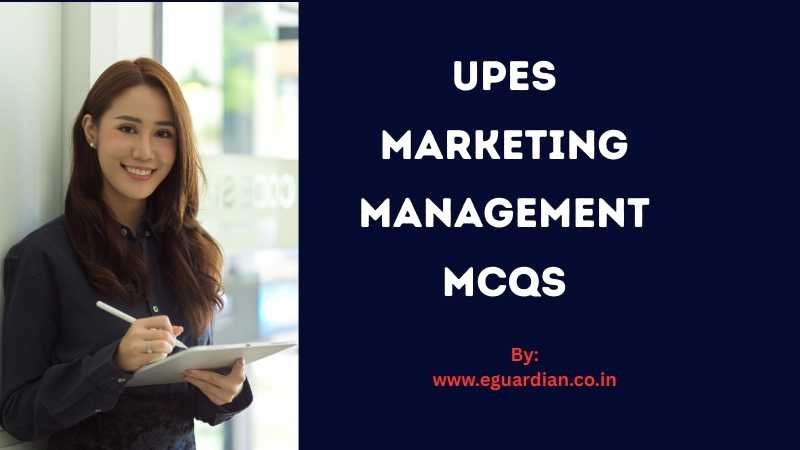If you are searching for Supply Chain Management MCQ Questions and Answers With PDF, you can get great help from my research.

I have collected a variety of questions and answers from different sources to help you prepare for your exams. I have also included a PDF document with all of the questions and answers.
Library
|
What Is Supply Chain Management?
In business, supply chain management (SCM) is the management of the flow of goods and services from suppliers to customers.
It includes the coordination and management of all activities involved in procurement, conversion, and logistics management.
SCM is a systems approach to managing the entire flow of materials, information, and finances from suppliers to customers.
There are three key components of SCM:
- supply chain planning
- supply chain execution,
- and supply chain monitoring.
Supply chain planning involves the coordination of all activities in the supply chain to ensure that the correct quantity and type of resources are available when and where they are needed.
Supply chain execution includes all activities necessary to move resources from one location to another, including transportation, warehousing, and order fulfillment.
75 Supply Chain Management MCQ Questions and Answers
1. Some of the quality techniques are ___, ___, and ___.
Ans. SPC, HALT, and HASS
2. Mention any one condition for the selection of sources.
Ans. Complying with the checklist consisting of supply selection criteria.
3. Reports on quality control, and inventory control systems are the criteria for which of the following factors?
a) Operating controls
b) Labour relation
c) Training aids
d) Reciprocal arrangements
Ans. a) Operating controls.
4. On what basis did Dickson formulate the evaluation factors?
Ans. Based on the survey done on purchasing agents and managers.
5. Mention any two of the SCM constructs.
Ans. Level of information sharing, quality of information sharing.
6. The main areas of SQM are Supply Chain Management and Quality Control. (True/False)
Ans. False. The main areas of SQM are Supply Chain Management and Quality Management.
7. ___, ___, and ___ help in identifying the competitive advantage.
Ans. Price, Quality, and delivery dependability.
8. ___ does not belong to QM practices. (Pick the right option)
a) Customer focus
b) Top management leadership
c) Process management
d) Internal lean practices
Ans. d) Internal lean practices.
9. Aligning goals is a long-term process. (True/False)
Ans. True
10. Mention one business model.
Ans. Six Sigma.
11. The risks involved in the operational performance environment are ___, exchanges of currency with foreign clients.
Ans. Trading relations.
12. Accepting third-party standards is a practice approach to designing a robust system. (True/False)
Ans. True.
13. The main aim of VRM is to free purchasers from the control of vendors. (True/False)
Ans. True.
14. VRM must enable customers to control their own ___.
Ans. Data.
15. Purchasing strategy defines goods and services that can be purchased with a specified amount of ___.
Ans. Currency.
16. The costs of goods and services are considered the most important___ of the purchasing process.
Ans. Determinants.
17. Tax maximizes the real income. (True/False)
Ans. False. Tax minimizes real income.
18. Purchasing is the process of acquiring all the materials needed by an organization in exchange for goods. (True/False).
Ans. False. Purchasing is the process of acquiring all the materials needed by an organization in exchange for funds.
19. The high-value products usually require ___.
Ans. Bids.
20. The goods that are received from the supplier go through ___.
a) Receipting process
b) Tender process
c) Payment process
d) Selection process
Ans. a) Receipting process.
21. ___ is defined as the increase in the demand variation in a supply chain from downstream to upstream.
Ans. Bullwhip effect.
22. Which among the following options is a reason for the bullwhip effect?
a) Demand forecasting
b) Strategic Partnership
c) Lead time reduction
d) Misguided capacity plan
Ans. a) Demand forecasting.
23. Variability increases with an increase in lead time. (True/ False)
Ans. True.
24. Most retailers place ___ orders during the shortage periods of products.
Ans. Inflated.
25. Uncertainty can be reduced by centralizing the ___.
Ans. Demand information.
26. ___ is defined as a management tool that is used to predict the uncertain future.
Ans. Forecasting.
27. Information sharing among various systems in the supply chain leads to effective forecasting. (True/False)
Ans. True.
28. In which among the following methods is experts’ opinions taken into consideration while creating forecasts?
a) Judgement method
b) Time-series method
c) Casual method
d) Market research method
Ans. a) Judgement method.
29. In the market research method, various past data are used to create the forecast. (True/False)
Ans. False. In the market research method, market testing or market surveys are conducted to understand the behavior of the consumers.
30. Reducing the ___ between forecast and actual demand should be the goal of an effective forecast.
Ans. Variation.
31. Effective sharing of ___ is very important to coordinate the various stages of the supply chain.
Ans. Information.
32. Manufacturing, ___, transportation, and ___ are the various systems involved in a supply chain.
Ans. Storage, the retail system.
33. In local optimization, one system in a supply chain finds out what is best for the entire system. (True/False)
Ans. False. In local optimization, each system optimizes its own operations without considering the effect of its operations on other systems in the supply chain.
34. The time taken from the moment the buyer places an order to the moment the buyer receives it is defined as ___.
Ans. Lead time.
35. ___ and ___ are the components of lead times.
Ans. Order lead time, information lead time.
36. Information lead time is the time taken to transport and produce the product. (True/False)
Ans. False. Information lead time is the time taken to process an order in a supply chain.
37. Lead time reduction is helpful to reduce the cost throughout the supply chain and it helps to improve ___.
Ans. Customer satisfaction.
38. Clear information regarding the status of the entire supply chain to reduce lead time is necessary. (True/False)
Ans. True.
39. Information can be used effectively to lessen the need for many of the tradeoffs. (True/ False)
Ans. True.
40. Large lot sizes lead to low inventory levels. (True/ False)
Ans. False. Large lot sizes lead to high inventory.
41. We can reduce ___ cost by aggregating the product movement. (Pick the right option)
a) Inventory cost
b) Transportation cost
c) Order cost
d) Warehouse cost
Ans. b) Transportation cost.
42. The complexity of supply chain management increases with an increase in ___.
Ans. Product variety.
43. We can improve ___ by reducing inventories, manufacturing, and transportation costs.
Ans. Customer service.
44. The purchase of machinery, equipment, or materials must go through the ___ department.
Ans. Purchasing.
45. A department places a document called requisition and gets approved by the authorized person in the ___ department.
a) Purchasing
b) Requisitioning
c) Finance
d) Warehouse
Ans. b) Requisitioning.
46. Many organizations prefer using ___ to manage their vendor relationship.
Ans. Vendor Relationship Management (VRM).
47. Many companies have realized that the Internet helps companies to move away from ___.
Ans. Push strategy.
48. The distribution strategies must be organized according to emerging ___.
Ans. Industrial trends.
49. Which of the following is a type of transshipment facility?
a) Warehousing
b) Cross-docking
c) Direct shipment
d) Distribution center
Ans. b) Cross-docking.
50. The warehouses which are being owned, managed, and controlled by both government and private agencies are called ___.
Ans. Bonded warehouses.
51. The objective of this centralized system is to minimize the cost associated with it for satisfying the service-level requirements. (True/False)
Ans. True.
52. The design and the facilities offered by ___ warehouses are dependent on the nature of the products that are to be stored.
Ans. Private.
53. The production and distribution decision forms the long-term forecasts in a pull-based supply chain. (True/False)
Ans. False. The production and distribution decision forms the long-term forecasts in a push-based supply chain.
54. ___ system reduces the bullwhip effect. (Pick the right option)
a) Distribution
b) Push-based
c) Pull-based
d) Supply chain management
Ans. c) Pull-based.
55. E-business strategies were developed with a view to meet some expectations like reducing cost, decreasing flexibility, and profits. (True/False)
Ans. False. E-business strategies increase flexibility and profits.
56. ___ is defined as the ability to electronically perform major commerce transactions.
Ans. E-commerce.
57. Push or pull-based systems come into play depending on the execution time of the process with respect to ___.
Ans. Customer demand.
58. ___are referred to as speculative processes.
Ans. Push process.
59. Partnerships that improve time to market, distribution times, or repair times help in ___
a. Adding technological strength
b. Adding value to products
c. Enhancing strategic growth
d. Strengthening operations
Ans. b) Adding value to products.
60. A partnership that enhances advertising or increases access to new ___ can be beneficial to firms.
Ans. Market channels.
61. Outsourcing is a process wherein a company assigns some of its ___ functions or processes to a third party.
Ans. In-house.
62. The benefits of outsourcing that are associated with decreased cost, cycle times, better customer perception, and approval are indirect benefits. (True/False)
Ans. False. The benefits of outsourcing that are associated with decreased costs and cycle times and better customer perception and approval are direct benefits.
63. Strategic alliances provide a great opportunity for organizational learning. (True / False)
Ans. True.
64. Firms with appropriate partnerships can improve operations by reducing ___ and operation cycle times.
Ans. System costs.
65. Asset-owning 3PL companies are termed fourth-party logistics service providers (4PL). (True / False)
Ans. False. Non-asset-owning 3PL companies are termed fourth-party logistics service providers (4PL).
66. Which of the following categories of 3PL companies provide standard logistic services like warehousing, packing, and distribution?
a) Standard 3PL companies
b) Service developers
c) Customer developers
d) Customer adapters
Ans. a) Standard 3PL companies.
67. The benefit of using 3PL in a company is that it allows the company to focus on its core competencies. (True/False)
Ans. True.
68. ___ is a business model in which parts or goods are delivered just when needed.
Ans. Just In Time (JIT).
69. The continuous-replenishment strategy is also called ___.
Ans. Rapid replenishment strategy.
70. Data accuracy can be maintained by using barcoding and scanning techniques. (True/False)
Ans. True.
More Question Answer
Supply Chain Management Multiple Choice Questions and Answers: Set-1
Dear Readers, you may download the pdf form from here. If you like the post on Supply Chain Management MCQ Questions and Answers please share it on social media.
FAQs related to Logistics and Supply Chain Management
Q1. What is BBA in Logistics and Supply Chain Management?
Answer: BBA in Logistics and Supply Chain Management is a specialized undergraduate program that focuses on the efficient movement of goods and services from manufacturers to consumers. It encompasses various aspects of supply chain management, distribution, transportation, and operations to ensure seamless business operations and customer satisfaction.
Q2. What are the Course Details for BBA in Logistics?
Answer: The course typically spans three to four years and covers a range of subjects related to logistics and supply chain management. Students can expect to study topics such as inventory management, transportation systems, procurement, warehouse management, and international logistics.
Q3. What Subjects are Covered in BBA Logistics?
Answer: BBA Logistics covers a diverse array of subjects, including:
- Principles of Logistics Management
- Supply Chain Strategy and Design
- Transportation and Distribution Management
- Inventory Control and Warehousing
- International Trade and Logistics
- Procurement and Supplier Management
- Retail Logistics and E-commerce Operations
Q4. How Supply Chain Management Works?
Answer: Supply chain management (SCM) is the process of planning, executing, and controlling the operations of the supply chain with the aim of achieving a company’s strategic objectives.
A company’s supply chain includes all the activities necessary to take a product or service from its initial conception to its final delivery to the customer. In other words, it encompasses the entire life cycle of a product or service.
Q5. Why Supply Chain Management MCQ is Important for MBA Students
Answer: There are several reasons why SCM is such an important topic for MBA students.
There are a number of reasons why Supply Chain Management MCQ is important for MBA United States of America and Indian students.
1) Supply Chain Management MCQ provides an opportunity for students to learn about the various aspects of supply chain management.
2) Supply Chain Management MCQ helps students to understand the importance of supply chain management in businesses.
3) Supply Chain Management MCQ helps students to appreciate the complexities involved in managing a supply chain.
Conclusion Points
The study of Supply Chain Management (SCM) MCQs is important for MBA students because it provides them with the necessary skills and knowledge to manage the flow of goods and services within an organization.
SCM encompasses the entire process of procuring raw materials, manufacturing goods, and delivering products to customers.
Therefore, understanding SCM is essential for any business student who wishes to pursue a career in management.
| My Advice: Good ways to learn more about Supply Chain Management MCQs would be to read relevant books on the topic or to look for online blogs written by experts in the field.
Additionally, attending conferences or workshops on Supply Chain Management could also be beneficial in order to network with other professionals and gain insights into best practices. |




Thank you for the useful info! I wouldnt have discovered this by myself!
Too intersting